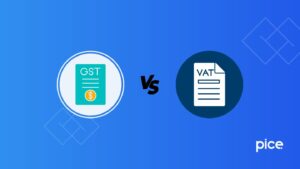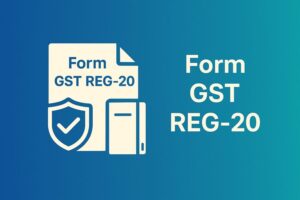How to Get GSTIN Number Online: A Complete Guide
- 24 Oct 25
- 15 mins
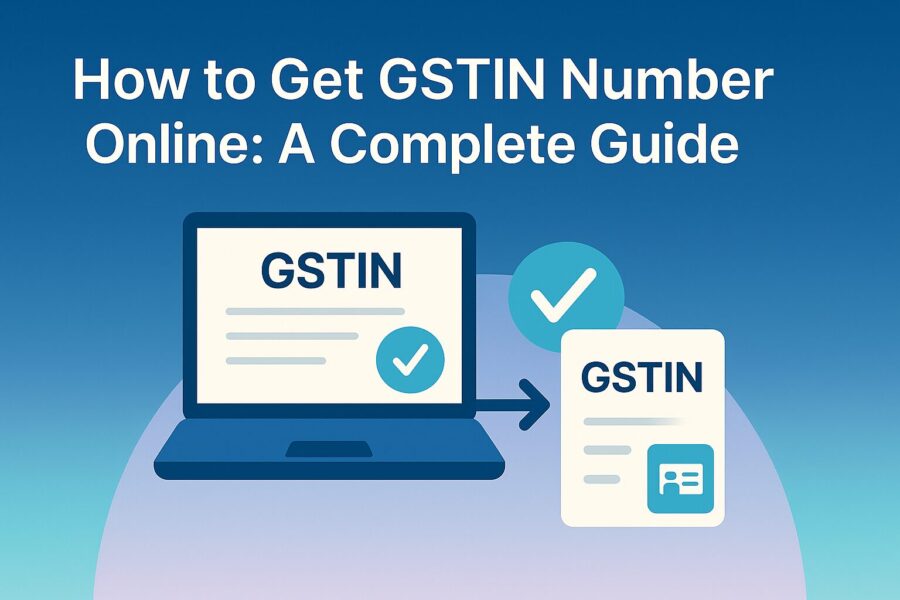
How to Get GSTIN Number Online: A Complete Guide
- In Which Cases Does Obtaining GSTIN Prove Beneficial?
- Types of GST Registration
- Most Important Constituents of GST Registrations
- Documents Required to Obtain GSTIN
- Online GST Registration Process
- GST Registration Through Aadhaar Authentication
- Charges for GST Registration And Obtaining GSTIN
- Features of GST Registration in India
- Benefits of Having a GST Registration Online Through the GST Portal
- What Are The Exemptions in GST Registration?
- Steps to Get a GST Number or GSTIN
- Steps to Check Your GST Registration Status Online
- Steps to Download Your GST Registration Certificate
- Under What Circumstances Does a Business Deregister From GST?
- Penalties for Not Getting a GST Registration
- Interesting Facts About GST Registration
- Conclusion
Key Takeaways
- GST registration online is mandatory for businesses exceeding the annual turnover threshold of ₹40 lakh (₹20 lakh or ₹10 lakh in special states).
- Learn how to get a GSTIN number online through the official GST portal with Aadhaar authentication for a quick and hassle-free process.
- Documents required for GST registration vary by business type, including PAN, Aadhaar, and business address proof.
- Having a GST registration certificate enables e-commerce, loan eligibility, and input tax credit benefits.
- Penalty for not registering under GST can be up to 10% of due tax or ₹10,000—making timely registration crucial for all businesses.
The GST (Goods and Services Tax Act) came into effect in India on 1st July, 2017. This singular indirect tax is a replacement for the various indirect taxes from the previous regime, making it easier to maintain books and comply with Indian tax laws.
Not every businessperson in India is liable to have a GST registration. However, according to the threshold in the GST regime, all businesses in India with an annual turnover above ₹40 lakh must get a GST registration. In some special states, the threshold is only up to ₹20 lakh.
Further in this blog, we are going to understand all about GST registration including how to get a GSTIN number online, eligibility criteria, types, documents required, fees and many more.
In Which Cases Does Obtaining GSTIN Prove Beneficial?
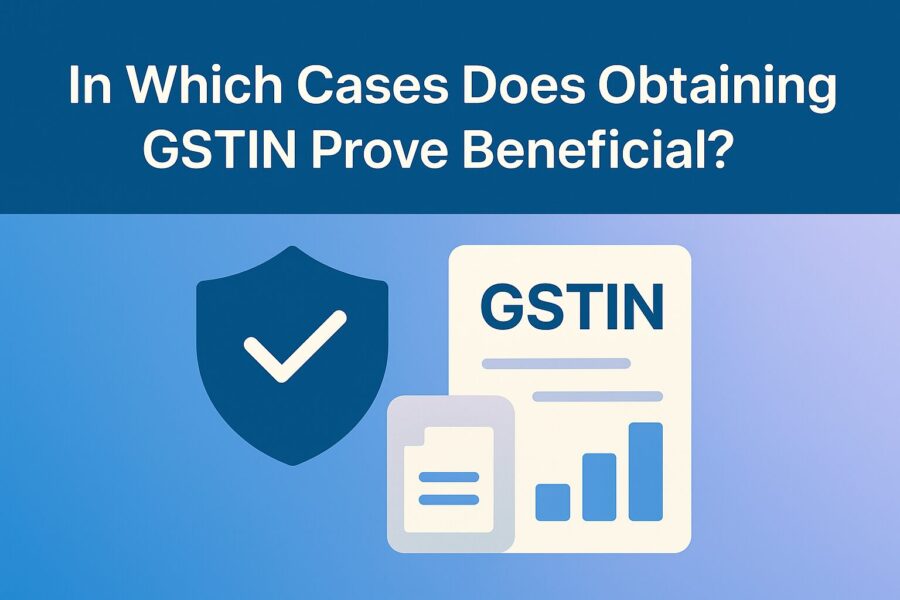
Here are some cases when it can be beneficial for businesses.
- People who registered their businesses for various indirect taxes from the previous tax regime, like VAT, Excise Duty, Sales tax, Services Tax, etc.
- Business owners whose business annual turnover exceeds ₹40 lakh or ₹20 lakh or ₹10 lakh. This threshold can vary in different cases according to the GST Regime.
- People who have input service distributors or agents of suppliers for their business.
- You should get a GST registration if your business involves the supply of goods or services via an e-commerce site.
- People who pay taxes under the reverse charge mechanism must get a GST registration.
- All e-commerce aggregators who bring together sellers and service providers should possess a GSTIN number.
- People whose business is to provide database access or information or retrieval services to any person other than a registered taxable person in India must register for GST.
Types of GST Registration
There are various types of GST registrations based on different types of taxpayers and various scenarios. It is important for you to know these types to understand the registration process if you want to obtain GSTIN. Here is a brief description of various types of GST registrations:
- GST for Casual Taxpayers
Most of India is registered under this type. In this GST registration, you will not have to pay any advance deposit during the registration process.
- GST for Seasonal Businesses
If you run a seasonal business, then this category applies to you. As a seasonal businessperson, you must pay a deposit equal to your GST liability. This registration is valid for 3 months, which is extendable and renewable.
- GST for Non-Resident Taxable Person
An individual who lives outside India and occasionally supplies goods in India must have a GST registration. These individuals have to pay a deposit equal to their expected GST liability. Their registration is valid for 3 months, which is extendable and renewable.
- Composition Scheme in GST
In this scheme, businesses pay a fixed annual amount regardless of their annual turnover. However, it is eligible for businesses with an annual turnover of up to ₹1 crore only. This scheme helps to simplify the GST process.
Most Important Constituents of GST Registrations
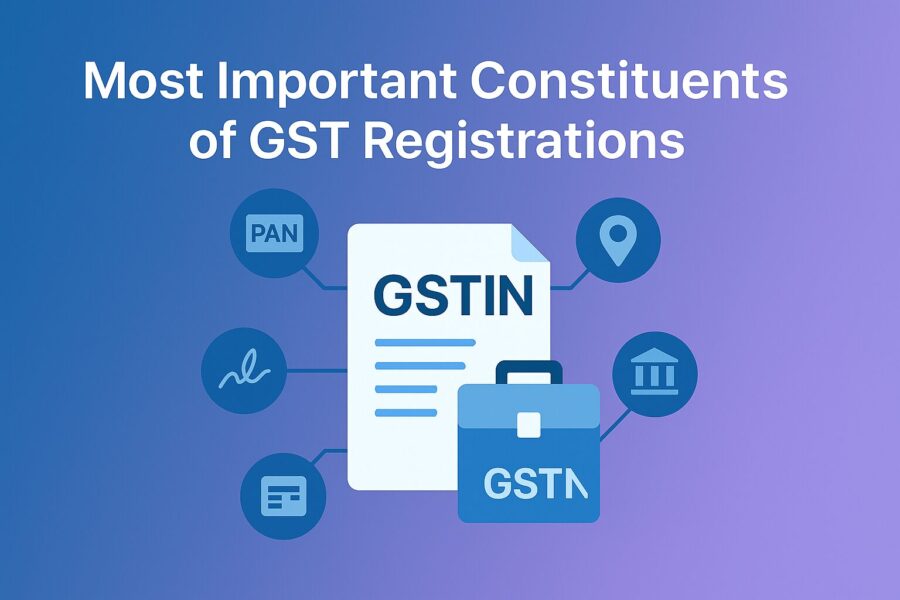
When you are registering for GST, there are a few things that instantly come to your mind. Here are some things you should know thoroughly about yourself before you get a GST registration for your business.
- Business Financials and Credentials: This means you should know everything about your business, including its legal name, address and annual turnover.
- PAN Details: Keep your PAN card handy. You will need it for business identification and verification purposes.
- Duly-Updated Documents: When applying for registration on the GST Portal, you will need some documents such as KYC, business registration certificate and address proof. Try to provide authentic documents for a better probability of approval.
- Proof of Residing State: Provide proof of your history of living in a state. This will affect your SGST applicability.
- Type of Tax Applicable: The type of tax applicable to your business depends on your transactional location. Various transactions can implicate a combination of CGST, SGST and IGST on your goods.
Documents Required to Obtain GSTIN
There are various types of documents required when you are getting a GSTIN for your business. It varies based on the type of business or company you run. Here is a list of various documents you will need for various types of businesses and companies in India:
- Sole Proprietorship Business
Here is a list of documents you will need for a Sole Proprietorship Business’s GST registration.
- PAN card
- Owner’s photograph
- Business address proof
- Business’s main account’s bank details
- Owner’s Aadhaar card
- Company
Here is a list of documents you will need for a company’s GST registration
- Pan card
- Pan card of all directors of the company
- The company’s main bank account details
- Proof of a meeting with the signatory
- Signatory’s PAN card
- Articles of Association and Memorandum of Association of the company
- An incorporation certificate that must be coming from the Ministry of Corporate Affairs
- Aadhaar card of the Signatory
- Address proof of all directors
Online GST Registration Process
You can easily apply for a GST registration for your business online via the official GST portal. You will only need to have specific documents handy while applying. Here are a few steps you need to follow to get your GST registration and know how to get your GSTIN number online.
- Visit the official GST portal.
- Click on 'Services', then 'Registration', and finally click on 'New Registration'.
Further, the steps to a new registration are subdivided into two parts. Here they are.
New GST Registration- Subpart 1
Here are some things you need to do to ready your application process.
- You will see a drop-down menu, select 'Taxpayers' from that menu.
- Next, you have to fill out the form GST REG-1 for your new registration. In that form, you will have to enter details of your business, such as legal name, address, PAN card, etc.
- You will receive an OTP, verify it and click on proceed.
- Once this is done, you will receive your TRN or Temporary Reference Number. Now it is time for subpart 2 of the GST registration process.
New GST Registration-Subpart-2
Here is a list of the remaining things you need to do to get your GST registration.
- Visit the GST portal. Click on 'Services' and then click on 'Register'.
- Enter your TRN and enter the captcha code, then finally click on proceed.
- You will receive an OTP on your registered email ID and phone number. Enter the OTP and click on Proceed.
- Once you do this, you will see your GST registration application status. Click on the 'Edit' icon present on the right side of your screen.
- You will find 10 empty sections which you need to fill with valid documents.
- Once you upload all required documents, check them once and click on 'Submit and Proceed' to move further.
- Now, thoroughly review your declaration and submit your application for GST registration by going through a verification process. You can do verification by EVC, DSC or OTP method.
GST Registration Through Aadhaar Authentication
Using OTP for authentication is the common way to register for GST. However, many people now also use the Aadhaar card to authenticate their GST registration.
This makes the lengthy process more streamlined by automatically filling in some details from the Aadhaar database. This reduces the time required for manually entering all details. It may also come in handy in case you do not find some documents available in the Aadhaar database.
Charges for GST Registration And Obtaining GSTIN
Registering for GST online on the GST portal is free of cost. There are no application fees whatsoever. However, many people seek professional guidance from tax consultants who are proficient in handling this process fluently. These professionals’ time might cost you a little. However, it saves you from the hassle of handling numerous documents and risking rejection to silly mistakes.
Features of GST Registration in India
GST registration is specific to each state and its features might vary. However, here are some important features of GST registration.
- Suppliers have to get a GST registration for each state or union territory where they supply their goods and services.
- If you are a SEZ developer or own a unit in SEZ and you are responsible for running a unit in a domestic tariff area outside SEZ but in the same state. Then you have to register for the SEZ unit separately.
- A businessperson must present their GST registration certificate and GSTIN number in their main business place, along with all other business places that come under that GSTIN.
- An individual who registers for GST in one state is considered non-registered in other states.
- Businesses that have branches in multiple states must have GST registration in each of those states.
Benefits of Having a GST Registration Online Through the GST Portal
Here are some of the benefits of having a GST registration that you need to know:
- Availability of Loans: Having a GST registration increases your probability of getting a loan at lower interest rates.
- E-Commerce: To take your goods and services into the online market, you first need to get a GST registration. Simply said, registering for GST is the key to e-commerce.
- Legitimacy: You cannot legitimately run a business without a GST registration once it crosses the threshold on annual turnover.
- Tax Credit: With GST, you can gain Input Tax Credits for business purchases. This helps to reduce your tax burden.
- Builds Trust: People tend to buy valuable items from a GST-registered place rather than a basic unregistered shop.
What Are The Exemptions in GST Registration?
Some businesses in India enjoy a total exemption from GST registration. Here is a list of them.
- Small businesses that do not cross the threshold in annual turnover do not need to have a GST registration.
- Businesses that deal in products that are exempt from tax.
- An agriculturist making sales of their own produce does not need to have a GST registration.
- The Indian Government also make an exemption for specific categories of people.
Steps to Get a GST Number or GSTIN
Once your registration process is over, you will receive your GSTIN number. Here are a few simple steps you need to follow:
- Visit the official GST portal.
- Click on 'Services', then click on 'Registration' and finally click on 'New Registration'.
- In the next interface, fill in the details as required. Some of them include registered email ID, mobile number and business PAN number.
- Submit the details and click 'Proceed' to complete your registration process and receive your GSTIN number.
Steps to Check Your GST Registration Status Online
Checking your GST registration status can help you comply with GST norms and keep you ready for verification calls from your tax authorities. Here is how you can check your registration status online.
- Visit the official GST Portal online.
- Click on 'Services', then click on 'Registration' and choose 'Track Application Status'.
- Enter your ARN or Application Reference Number that you received during the application process on your registered email ID and mobile number.
- Enter the captcha code correctly.
- Finally, click on the 'Search' button and you will see your GST registration application status.
Steps to Download Your GST Registration Certificate
Your GST registration certificate is proof that your business is GST-registered. It proves that your business has its own identity in the Indian Tax Regime. This certificate makes it easier for you to make transactions in the business market. Here is how you can download your GST registration certificate online.
- Log in to the GST Portal using your personal credentials.
- Click on the 'Services' tab and select 'User Services'.
- Next, you need to click on 'View/Download Certificate'.
- Click on 'GST Registration Certificate'.
- Next, you will have to enter details such as your GSTIN or ARN in the specified sections.
- Click on 'Download'.
- Once you do this, your GST Registration will download to your device in PDF format.
- Finally, click on 'Save' or the 'Print' option for further accessibility of the certificate.
Under What Circumstances Does a Business Deregister From GST?
There are many reasons why a business registers for GST. However, a business does not always run in the same way. There are changes in operations that might lead owners to cancel their GST registration. Here is a list of reasons why people mostly cancel their GST registration.
- Reduction in Sales: Some businesses face a steep reduction in their sales because of some voluntary or involuntary activities. A business can decide to cancel its GST registration if its annual turnover gets lower than the threshold.
- Business Shut Down: A business must get its GST cancelled if, for any reason, its owners decide to discontinue its operations.
- Sale of Business: A business owner must cancel their GST registration if they decide to sell their business.
- Major Changes in the Business’s Constitution: Most businesses have to deregister their GST and reapply for GST at times of major changes in the business’s constitution. A major change includes a change of private business into a partnership business.
Penalties for Not Getting a GST Registration
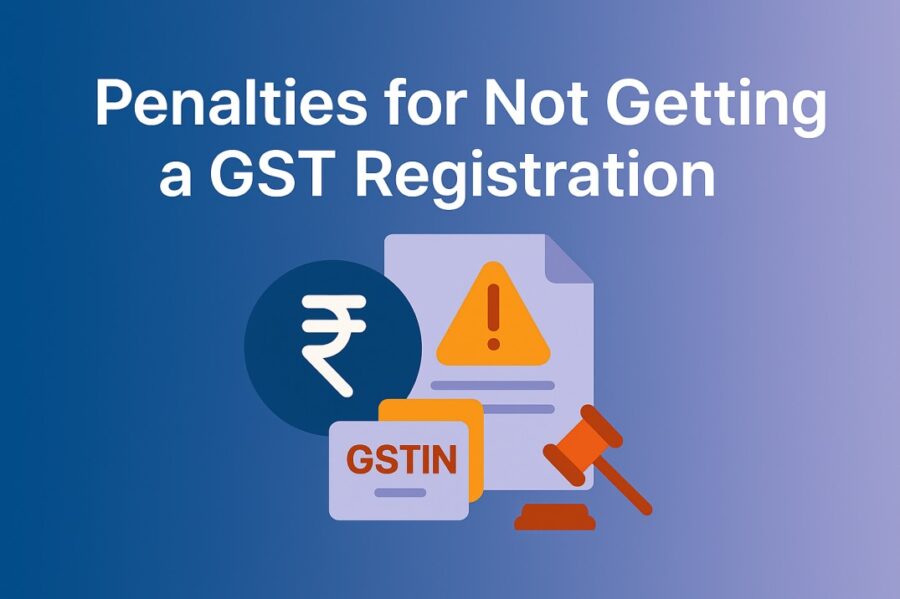
The government of India imposes fines on you if you have crossed the threshold or in any way, you are liable to have a GST registration but do not apply for it on time. According to the GST Act, the penalty is usually 10% of the due tax liability or ₹10,000, whichever is more.
For offences such as deliberate tax evasion can impose a penalty equal to 100% of the due tax amount. Non-registration can also lead to interest charges on the outside tax amount.
Registering for GST through the online process might take some time. It is better if you apply for a registration keeping a buffer time in hand.
Interesting Facts About GST Registration
There are some facts that you must understand before getting a GST registration as it will help you make the right decision for your GST registration.
- It is compulsory for business owners to get a GST registration for their business once they cross an annual threshold of ₹40 lakh (in some cases ₹20 lakh or ₹10 lakh).
- A business having a supply chain in multiple states must have a GST registration in each state they are supplying into.
- When you apply to get a GST registration, a tax officer generally contacts you for additional details.
- Non-compliance with GST rules and regulations can cost you hefty fines.
Conclusion
A GSTIN number is the identification number that provides a unique identity to every taxpayer under the GST Regime. Most people find it overwhelming to find out how to get a GSTIN number online.
However, it is a simple process involving a few clicks as described in this article. All businesses must present their GST registration certificate and their GSTIN number to their customers in their main business place as well as their other business place that falls under the same GSTIN.
💡If you want to streamline your payment and make GST payments via credit, debit card or UPI, consider using the PICE App. Explore the PICE App today and take your business to new heights.
 By
By 







